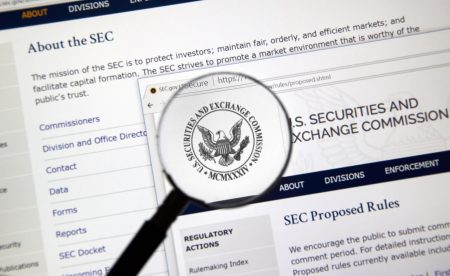What happened this week around blockchain and cryptocurrencies? The most relevant local and international events as well as appealing background reports in a pointed and compact weekly review.
Selected articles of the week:
The US Securities and Exchange Commission (SEC) continues its campaign against the crypto industry. In a lawsuit filed in a federal court in Washington DC, the agency accused the largest cryptocurrency exchange, Binance, of 13 violations of securities laws. In addition to mishandling customer funds, the exchange is alleged to have misled investors and regulators and distributed unregistered securities to US customers. Interestingly, a few months ago, the Commodity Futures Trading Commission (CFTC) also filed a similar lawsuit against Binance. Unlike the CFTC process, the SEC declared twelve new tokens as unregistered securities, including some of the most significant cryptocurrencies such as Solana (SOL), Cardano (ADA), and Polygon (MATIC). It appears that the agency, under the leadership of Gary Gensler, is still trying to gain regulatory oversight of the sector through legal proceedings. Binance responded to the allegations in a blog post and announced its intention to vigorously defend itself in court. Given the platform’s billions in revenue, the legal dispute is likely to end in another lengthy process, which could have far-reaching implications for crypto regulation in the US.
The SEC has filed a lawsuit against Binance and its CEO, Changpeng Zhao, with Gary Gensler accusing the company of deliberate deception.
Just one day after the Binance lawsuit, the SEC filed another complaint. This time, it targeted the US exchange Coinbase, which has already been involved in a legal battle with the agency for several months. The basis of the lawsuit was also the classification of some cryptocurrencies tradable on Coinbase as unregistered securities. As the affected tokens include some of the largest crypto assets by market capitalization, further lawsuits against trading platforms in the US are expected. The crucial question now is whether the regulatory crackdown in the US will prompt other regulatory authorities worldwide to follow suit. So far, no other jurisdiction, except the United States, has classified the affected cryptocurrencies as securities. In Europe, for example, securities are regulated under MiFID II and not under the newly introduced MiCA regulation.
Recurring market commentary on what’s happening in the crypto markets, summarized by the Crypto Broker team at Crypto Finance AG.
Artificial intelligence (AI) refers to the development of computer systems capable of performing tasks that typically require human intelligence, such as speech recognition, problem-solving, and decision-making. The rapid rise of AI has been facilitated by groundbreaking models like ChatGPT, which generate human-like responses and improve the understanding of natural language using deep learning techniques. However, the rise of these technologies has created new risks for digital identities. Artificial intelligence can be used, for example, to create synthetic identities or false documents, making identity theft and fraud easier. Here, blockchain technology could provide a solution. Blockchain-based decentralized identity systems enable secure and transparent verification processes that counteract AI-generated misinformation and create trust in the digital world. An overview.
Blockchain technology is designed to help combat AI threats in verification processes and provide an additional security layer.
A non-fungible token (NFT) is a unique digital asset that represents ownership or proof of authenticity for a specific item using blockchain technology. The unique token standard allows for verifiable ownership and creates a new market for digital collectibles, such as artwork, music, videos, or even virtual properties. While NFTs were originally associated with purely digital assets, they can also be linked to physical objects through the process of tokenization. This allows for the creation of a unique digital representation of a physical object, improves traceability of origin, and facilitates the trade of physical goods in the digital realm. Fashion giant Louis Vuitton is taking advantage of this possibility in a new collection that equips the iconic Louis Vuitton suitcase with a digital counterpart. The “Via Treasure Trunks” are designed as a portal for collectors and are intended to provide them access to a variety of experiences and limited offerings throughout the year.
Louis Vuitton’s “Via Treasure Trunks” NFTs are intended as a portal for collectors to gain exclusive access to limited-edition offerings.
In addition: Stablecoins are a type of cryptocurrency designed to minimize price volatility by being pegged to a stable asset, such as a fiat currency. This type of cryptocurrency plays an important role in the industry as it serves as a reliable medium of exchange on trading platforms and decentralized applications. Currently, dollar-pegged stablecoins dominate the market, with other fiat currencies having a weak presence. This is why several initiatives have emerged over the years to develop a digital Swiss franc. One of these initiatives is the Swiss Stablecoin AG, founded last spring, which announced the successful completion of its first financing round this week, along with the appointment of the former CEO of TWINT to its board of directors.
Thierry Kneissler, founder and former CEO of TWINT, joins the board of directors of franc stablecoin issuer Swiss Stablecoin AG.









